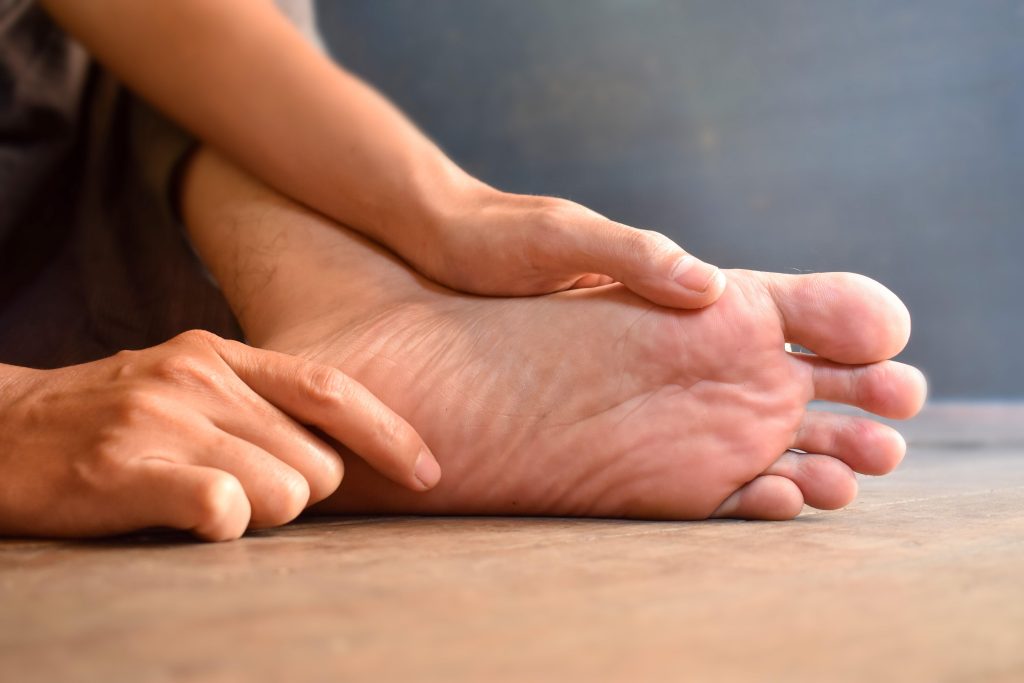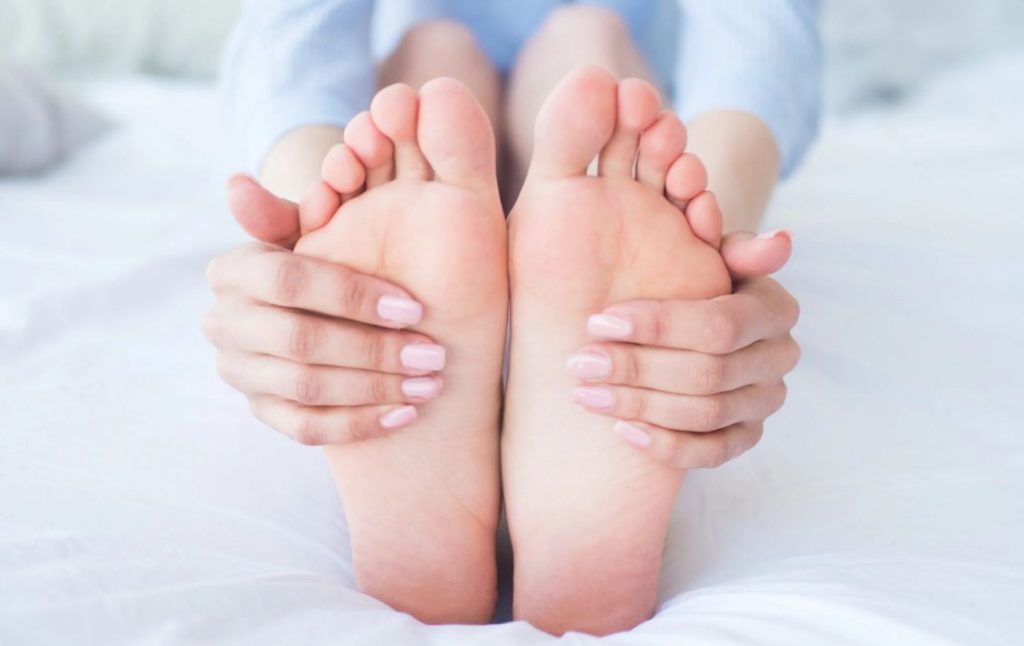Our feet do more than carry us from place to place they can also act as an early warning system for underlying health issues. Paying attention to subtle changes temperature, color, texture, and sensations can help you detect circulatory, neurological, or systemic problems before they worsen.
1. Cold Feet: A Signal of Poor Circulation
If your feet feel persistently cold, it might indicate that blood isn’t flowing properly. Conditions such as peripheral artery disease, smoking damage, hypertension, or even early signs of heart disease could be at play. Nerve damage from uncontrolled diabetes may also interfere with temperature regulation. If this is a recurring issue, it’s wise to check with a medical professional.

2. Swelling in the Feet: Fluid Imbalance
Swollen ankles or feet (edema) are common signs of fluid retention. This may result from long hours of standing, obesity, or high salt intake. However, persistent swelling could hint at more serious conditions like congestive heart failure, kidney disease, or liver disorders. Monitoring the duration, symmetry, and severity of swelling can help distinguish benign swelling from something more concerning.
3. Blue or Purple Tints: Circulation and Oxygen Issues
A bluish or purplish color in your toes or feet may mean reduced oxygen in your blood or poor circulation. Conditions such as Raynaud’s phenomenon, peripheral vascular disease, or congenital heart issues might cause this discoloration. If nails or surrounding tissues shift to this hue, it warrants medical attention.
4. Redness or Flushing: Inflammation or Nervous System Response
Persistent redness or flushed skin on the feet or ankles may result from inflammation, allergic reactions, or nerve-related causes. Erythromelalgia, an uncommon vascular-nerve disorder, intensifies warmth, burning, and redness, especially when legs are elevated or heated. Chronic redness should not be ignored.
5. Very Pale or White Feet: Possible Circulation Block
If the skin on your feet appears unusually pale, white, or even waxy, it could mean that arterial blood flow is compromised. This may occur in conditions like peripheral artery disease or narrowing of the blood vessels supplying the lower extremities. Look for accompanying symptoms like pain when walking (claudication) or slower healing of small wounds.
6. Spider Veins or Varicose Veins: Valve Weakness in Veins
Spider veins (thin, reddish) and varicose veins (larger, bulging) often reflect weakened or damaged vein valves. Risk factors include genetics, prolonged standing, obesity, and hormonal shifts. While often harmless, severe cases may lead to aching, swelling, or ulcers, which may need treatment.
7. Thick or Discolored Nails: Fungal or Systemic Conditions
Toenails that thicken, darken, or crumble may signal fungal infections (onychomycosis). But sometimes they point to circulatory difficulties, psoriasis, or systemic disorders. If thickened nails don’t improve with routine care, professional evaluation is recommended.
8. Hair Loss on Lower Legs or Feet
Hair on your toes and lower legs offers a clue to healthy circulation. When blood flow is impaired, hair may thin or disappear entirely. Loss of leg hair—especially combined with other signs like pale skin—can hint at vascular disease or other circulatory compromise.
9. Burning, Tingling, or Numbness: Neuropathy
Uncomfortable sensations such as burning, tingling, numbness, or “pins and needles” often suggest nerve irritation or damage. Diabetes, vitamin deficiencies, chronic alcohol use, or peripheral neuropathies may be behind these symptoms. Early detection can prevent worsening and guide intervention.
10. Ulcers, Blisters, or Slow-Healing Wounds
One of the most significant red flags is when cuts, sores, or blisters on your feet take weeks to heal. Impaired circulation, diabetes, or immune dysfunction may underlie this delayed healing process. Because foot wounds can worsen rapidly, prompt care is essential.

What You Should Do
Begin a habit of regularly examining your feet—daily or weekly—and noting any new or worsening changes. Maintain good foot hygiene, wear supportive footwear, and manage underlying conditions like diabetes, hypertension or high cholesterol. If you detect concerning signs—persistent discoloration, swelling, numbness, or nonhealing wounds—schedule a medical evaluation. Early intervention often leads to better outcomes.
Conclusion
Your feet can serve as a mirror reflecting hidden aspects of your health. By staying observant to temperature shifts, texture changes, skin discoloration, and unusual sensations, you may catch warning signals early. Taking care of your feet—and listening to what they may be telling you—can contribute to maintaining overall health and preventing serious complications.

















